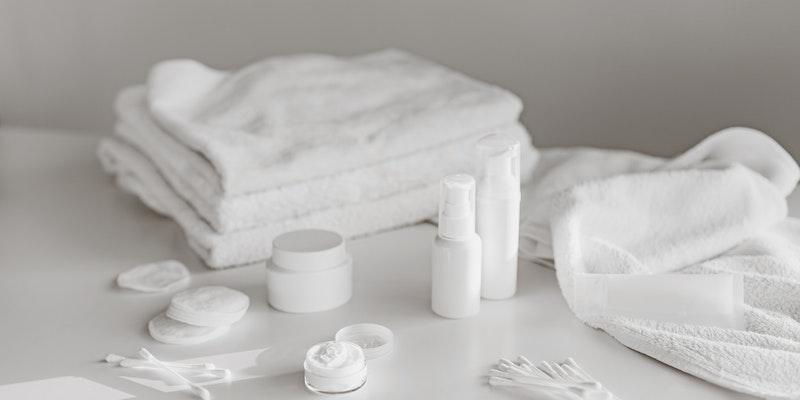Salicylic acid peels are popular for brighter, clearer skin. In addition to exfoliating, these peels treat acne and improve skin texture. But how do they work? We'll discuss salicylic acid peel science and its benefits in this article.
What is Salicylic Acid?
Willow bark produces salicylic acid, a BHA. Salicylic acid body wash, skin creams, and serum contain it. Exfoliating is this acid's primary skincare use. It actively works to shed away dead skin cells and clear out clogged pores, paving the way for a clearer complexion. Many people turn to products containing this ingredient to combat common skin issues, from acne to dullness. Its natural origin and effectiveness make it a sought-after component in the skincare industry.
The Science Behind Salicylic Acid Peels
Skincare superstar salicylic acid works due to its unique chemical structure. Since it's oil-soluble, this beta hydroxy acid (BHA) can penetrate the skin's sebaceous glands deeper. Let's analyze this compound skin effects.
Salicylic acid works upon application to the skin by disrupting the bonds that keep skin cells adhering together. This disruption facilitates the shedding or peeling of these dead skin cells. New, revitalized skin emerges from this shedding. Salicylic acid products rejuvenate the skin, making it look younger.
Salicylic acid exfoliates gently, making it stand out in the market of chemical peels. Its gentleness makes it ideal for at-home treatments, mainly with over-the-counter products. Estheticians and dermatologists can apply higher salicylic acid concentrations for more intense exfoliation. These more potent treatments can offer dramatic results, addressing deeper skin concerns and providing a more thorough rejuvenation.
Molecular Structure and Solubility
The molecular structure of salicylic acid gives it unique properties. Salicylic acid is oil-soluble, AHAs water-soluble. Its solubility lets it penetrate oily skin and clogged pores deeply, making it a favorite for acne.
pH Levels and Exfoliation
Salicylic acid's pH affects its skin-treatment properties. Most salicylic acid products are acidic at 3–4. This acidity breaks skin cell bonds. Dead skin cells shed off more quickly when these bonds weaken, leading to the exfoliation process. This is why the skin often feels refreshed and renewed after using a salicylic acid product.
Interaction with Skin Proteins
Salicylic acid interacts with the proteins in our skin in a way that aids its exfoliating properties. By weakening the connections between cells, it promotes faster cell turnover. This unclogs pores and promotes cell growth. You promote healthier skin growth by using products like salicylic acid body wash.
Safety and Concentration
Salicylic acid works, but you need the correct dose. Over-the-counter products have lower concentrations and are safe for daily use. More potent treatments, like peels, use higher concentrations and should be administered by professionals for skin safety.
At-Home vs. Professional Salicylic Acid Peels
You can either get salicylic acid peels at your house or professionally at a saloon.
At-Home Peels
Salicylic acid products designed for home use generally have up to 20% concentration. These are crafted to target the outermost layer of the skin. With consistent application, users often notice a clearer complexion, a softer skin texture, and reduced blemishes. Interestingly, even though they're termed "peels," these at-home versions don't usually result in the noticeable peeling one might expect. Instead, they accelerate the natural shedding process of dead skin cells. Products like salicylic acid body wash or salicylic acid serum can be incorporated into daily routines for maintaining skin health.
Professional Peels
Those seeking a deeper, more intensive treatment might opt for professional-grade peels. Skincare experts administer these, containing 30% and 50% salicylic acid concentrations. Given their strength, they penetrate deeper layers of the skin, addressing more stubborn issues and delivering transformative results. If you're battling persistent skin concerns, a professional salicylic acid for skin treatment might be the answer.
How to Use Salicylic Acid Peels
At-Home Treatments
When using salicylic acid products at home, always adhere to the guidelines provided on the product. Some formulations, like specific salicylic acid serums, are meant to be applied and left on the salicylic acid for skin, possibly even overnight. In contrast, others, such as salicylic acid body wash, must be rinsed off after a short duration. Regular and correct use ensures optimal benefits without over-stressing the skin.
Professional Treatments
A session with a skincare professional usually starts with a thorough skin cleansing. Following this, the expert applies the salicylic acid solution. They neutralize the acid after allowing it to work its magic for a few minutes. While the sensation during the treatment can be a bit unusual, it's typically more tingly than painful. The expertise of the professional ensures the skin's safety and health throughout the process.
Post-Treatment Care

The skin can exhibit some redness and feel stretched or tight after salicylic acid peel, whether at home or professionally. It's not uncommon to experience a mild burning sensation, but this usually fades within hours. The strength and depth of the peel dictate the after-effects. Some might see their skin flaking or even peeling in the days following the treatment.
During this recovery phase, being gentle with the skin is paramount. Opt for mild cleansers, hydrate with moisturizers, and never skip the sunscreen. Sun protection is vital as the skin is more susceptible to sun damage post-peel. Remember, products like salicylic acid serum can be reintroduced into the routine once the skin fully recovers.
Potential Side Effects
Salicylic acid peels, while beneficial, can sometimes lead to specific reactions on the skin. Some people report feelings of tenderness or a stinging sensation after the treatment. Others may experience dryness and flaking.
Skin crusts may form. A temporary skin color change is another side effect. Monitoring these reactions and seeking medical help if they worsen is crucial. Salicylic acid body wash and serum can help maintain skin health, but you must know how your skin reacts.
Who Should Avoid Salicylic Acid Peels?

Salicylic acid peels vary. Some should avoid or be cautious with these treatments. If you're allergic to salicylates, avoid these peels. Such treatments should also be delayed for pregnant women. Wait to heal cuts, sunburn, and other skin damage. Before a salicylic acid peel, consult a dermatologist if taking isotretinoin. You can benefit from salicylic acid skin care products and serums if they fit your needs and health.







